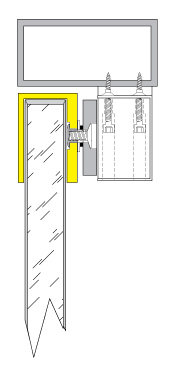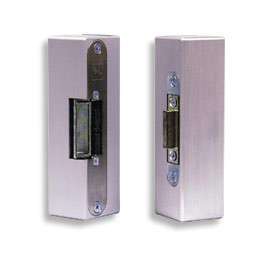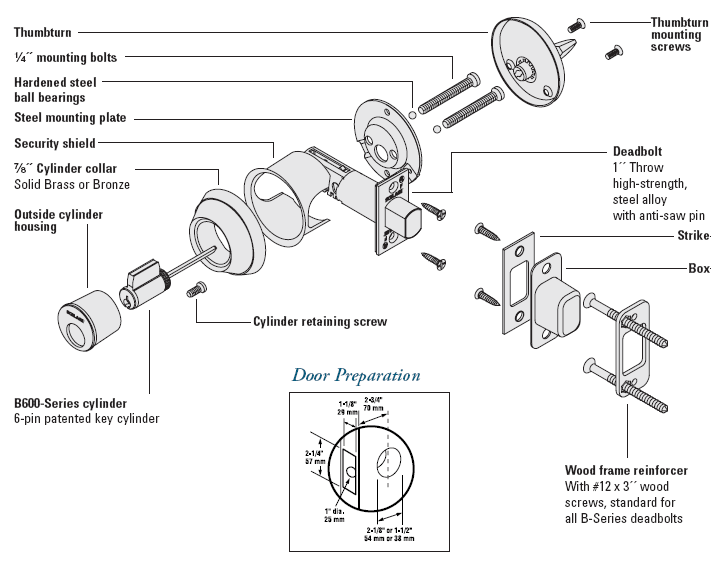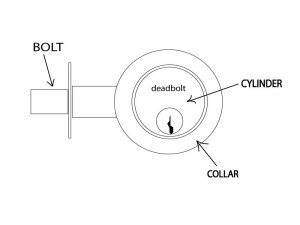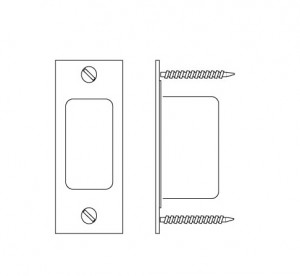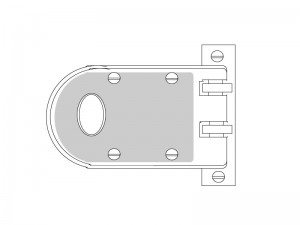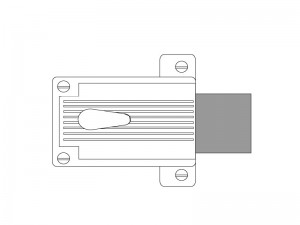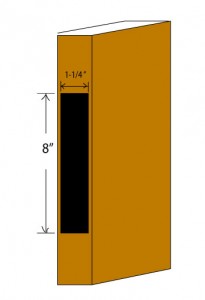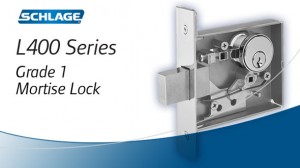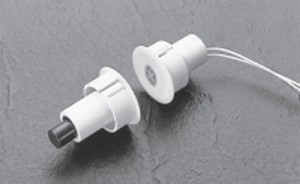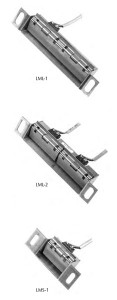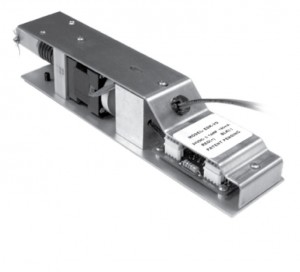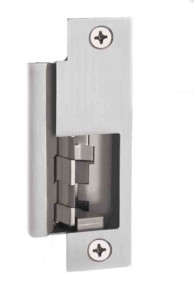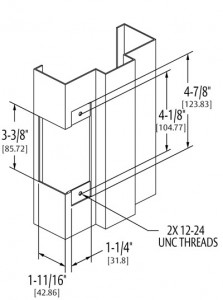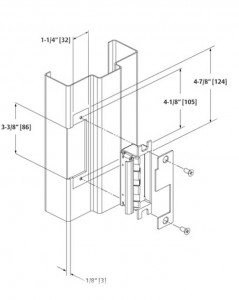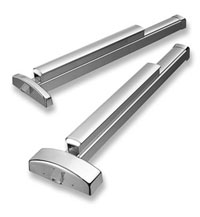Von Duprin and Schlage Electronics are divisions of Ingersoll Rand. Both are major manufacturers of power supplies for use with electric locking systems and access control. As of January 1st, 2011, Ingersoll Rand discontinued two of their power supply product lines, the PS800 series Von Duprin and the Schlage Electronics 500 series, and merged them into the new PS900 series.
A split in power supply branding may or may not remain, depending on what document you are looking at, but whether they say they are Schlage or Von Duprin, they are all the same PS900 series.
Here is the lineup:
PS902 – 2 Amp output at 12 or 24VDC, field selectable
Compatible with these option boards:
- 900-BBK: Battery Backup – back up power in case of power outage, includes batteries
- 900-FA: Fire Alarm – relay for interface with fire alarm panel – wires to main board
- 900-2Q: 2 Relay QEL control Board – to run 2 Von Duprin QEL devices
- 900-4R: 4 Relay Output Board – four relay outputs to operate 4 electric locking devices, not QEL or EL
- 900-4RL: 4 Relay Logic Board – for man trap or security interlock systems or up to 4 QEL devices
- 900-8F: Fused 8 Zone Distribution Board – 8 outputs, fused for circuit protection
- 900-8P: PTC 8 Zone Distribution Board – 8 outputs, circuit breaker protected
PS902 can accommodate 1 of the above option boards in addition to the 900-FA option and battery backup.
For use with electric locks and with Von Duprin Quiet Electric Latch retraction (QEL) exit devices, but NOT with Von Duprin electric latch retraction (EL) exit devices.
PS904 – 4 Amp output at 12 or 24VDC, field selectable
Compatible with these option boards:
- 900-BBK: Battery Backup – back up power in case of power outage, includes batteries
- 900-FA: Fire Alarm – relay for interface with fire alarm panel – wires to main board
- 900-2Q: 2 Relay QEL control Board – to run 2 Von Duprin QEL devices
- 900-4R: 4 Relay Output Board – four relay outputs to operate 4 electric locking devices, not QEL or EL
- 900-4RL: 4 Relay Logic Board – for man trap or security interlock systems
- 900-8F: Fused 8 Zone Distribution Board – 8 outputs, fused for circuit protection
- 900-8P: PTC 8 Zone Distribution Board – 8 outputs, circuit breaker protected
PS904 can accommodate up to 2 option boards and battery back up.
Note: no plug-in for fire alarm relay on main board. 900-FA is only usable with the PS904 if used with an option board.
For use with electric locks and with Von Duprin Quiet Electric Latch retraction (QEL) exit devices, but NOT with Von Duprin electric latch retraction (EL) exit devices.
PS906 – 6 Amp output at 12 or 24VDC, field selectable
Compatible with these option boards:
- 900-BBK: Battery Backup – back up power in case of power outage, includes batteries
- 900-FA: Fire Alarm – relay for interface with fire alarm panel – wires to main board
- 900-2Q: 2 Relay QEL control Board – to run 2 Von Duprin QEL devices
- 900-2RS: 2 Relay EL Control Board – to run up to 2 Von Duprin EL devices
- 900-4R: 4 Relay Output Board – four relay outputs to operate 4 electric locking devices, not QEL or EL
- 900-4RL: 4 Relay Logic Board – for man trap or security interlock systems
- 900-8F: Fused 8 Zone Distribution Board – 8 outputs, fused for circuit protection
- 900-8P: PTC 8 Zone Distribution Board – 8 outputs, circuit breaker protected
PS906 can accommodate up to 3 option boards, fire alarm interface (with option board) and battery back up.
For use with electric locks and with up to 6 Von Duprin Quiet Electric Latch retraction (QEL) exit devices, but NOT with Von Duprin electric latch retraction (EL) exit devices.
PS914 – 4 Amp output at 12 or 24VDC, field selectable
Compatible with these option boards:
- 900-BBK: Battery Backup – back up power in case of power outage, includes batteries
- 900-FA: Fire Alarm – relay for interface with fire alarm panel – wires to main board
- 900-2Q: 2 Relay QEL control Board – to run 2 Von Duprin QEL devices
- 900-2RS: 2 Relay EL control Board – to run up to 2 Von Duprin EL devices
- 900-4R: 4 Relay Output Board – four relay outputs to operate 4 electric locking devices, not QEL or EL
- 900-4RL: 4 Relay Logic Board – for man trap or security interlock systems
- 900-8F: Fused 8 Zone Distribution Board – 8 outputs, fused for circuit protection
- 900-8P: PTC 8 Zone Distribution Board – 8 outputs, circuit breaker protected
PS914 can accommodate 2 of the above option boards, plus fire alarm interface (on one of the boards) and battery back up.
Capable of powering:
- Up to 4 Electric Latch retraction (EL) exit devices with 900-4RL board
- Up to 2 EL devices with 900-2RS board
- Up to 4 Quiet Electric Latch retraction (QEL) exit devices
- Up to 4 Chexit (CX) delayed egress exit devices off the main board (use 900-8FA combination board if Fire Alarm relay is required)
- Electric locks or strikes
Ordering Tips:
PS-914 is a 4 Amp power supply that is double the capacity of the old PS873, however, from my conversation with IR tech support, their feeling is that it is prudent to power no more than 4 EL devices per PS-914. Theoretically the power supply could support as many as 8 EL devices however this presents the challenge of timing the relays so that no two can change states at the same time. If two EL devices are powered up simultaneously the PS-914 could be damaged.
None of the PS900 series power supplies are a drop-in replacement for their predecessors, and the old and new option boards are not cross-compatible with the old and new power supplies. Therefore, replacing old power supplies with new can present a rewiring challenge.
Ordering back-up batteries can be a little tricky, since they have very similar part numbers for the batteries, the charging circuit board, and a set that includes the board and the batteries.
- 900-BAT – Pair of batteries only
- 900-BB – Battery back up board only
- 900-BBK – Power battery back up kit, board and batteries
